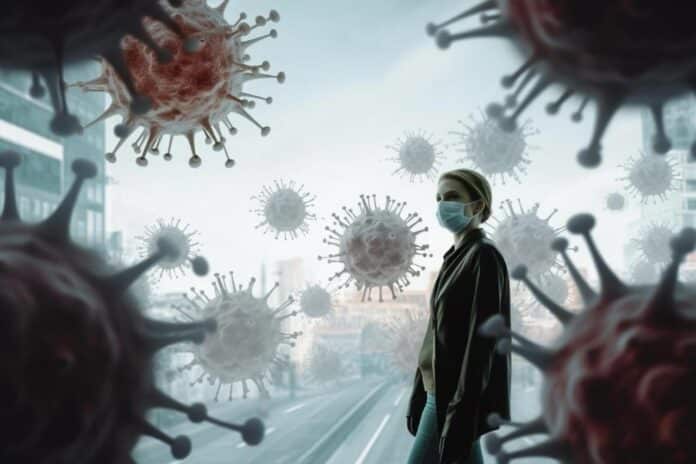In an ongoing trial of PANORAMIC, research looked at how to treat COVID-19. They took samples from 577 people in the UK who joined this trial. These people were divided into two groups. One group got a medicine called molnupiravir for five days, and the other group got regular care without any specific treatment.
Initially, molnupiravir helped people clear the virus faster than regular care. By day 5, 14% of the people on molnupiravir had no virus left, while only 2% of those on regular maintenance did. But after treatment, the virus didn’t go away as fast in the molnupiravir group. Nine days later, only 48% of the molnupiravir group had cleared the virus, compared to 56% in the regular care group.
The virus in people who took molnupiravir had more changes than in those who got regular care. The researchers could even grow some of these changed viruses in the lab from samples taken up to nine days after treatment. This suggests that people who take molnupiravir might still spread the virus to others.
Professor Joseph Standing, Professor of Pharmacometrics at University College, London, and lead author of the study, said: “We know that molnupiravir works by introducing errors into the SARS-COV-2 virus – which causes COVID-19. Mutated variations of the virus often cannot replicate well, so we saw a faster viral load decline. However, the fact that the virus remains in patients after the five-day molnupiravir treatment course indicates that the course is not long enough to clear the virus from the body. It is possible that these patients could be spreading a virus that has mutated. Suppose large numbers of people are treated in this way. In that case, new variants that help the virus evade the human immune system more effectively may arise.”
Researchers say the five-day treatment needs to be longer to eliminate the virus. They suggest a more extended treatment to see if it can clear the virus completely and reduce the chance of spreading it after treatment ends.
They also looked at how the body fights the virus – specifically, the levels of antibodies against the ‘spike protein’ after infection and treatment. They found that those who took molnupiravir had 6200 antibodies per milliliter after treatment. In contrast, those who got regular care had 8400 units per milliliter. This might be because the therapy initially lowered the amount of virus, so the immune system didn’t need to make as many antibodies. This could mean that people treated with molnupiravir might be able to get infected again sooner than those who got regular care.
Dr. Oliver van Hecke, Senior Clinical Research Fellow at the University of Oxford and co-author of the study, said, “These findings raise important questions about the impact of molnupiravir on patients’ immunity. Even if taking molnupiravir for longer fully removes the virus, some patients might still develop weaker protection against catching it again. It would be useful to explore whether molnupiravir and other antiviral drugs, in combination, better eliminate the virus and ensure patients build up good immunity against it. This could help prevent treated patients from catching it again soon after and reduce the chance of passing on mutated viral strains.”
These findings help policymakers design upcoming antiviral treatment approaches and should be considered for forthcoming COVID-19 treatment trials.
Based on this study, knowing how long people should take antiviral medicine for COVID-19 is essential, especially if they’re more likely to get very sick.
Journal reference:
- Standing, J.F., Buggiotti, L., Guerra-Assuncao, J.A. et al. Randomized controlled trial of molnupiravir SARS-CoV-2 viral and antibody response in at-risk adult outpatients. Nature Communications. DOI: 10.1038/s41467-024-45641-0.
